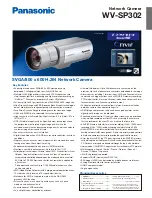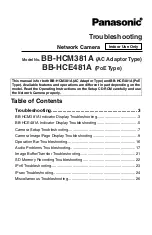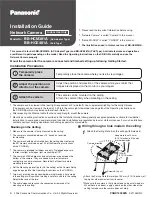
Installing the camera (GigE)
44
Goldeye G/CL Technical Manual V4.2.0
NOTICE
•
Use only DC power supplies with insulated cases.
•
For all power connections, use only shielded cables to avoid electromagnetic
interference.
•
Goldeye G cameras can source power from:
-
IEEE 802.3at Type 1 Class 0 (Goldeye G TEC1, Goldeye G TECless), IEEE
802.3at Type 1 compliant PoE power sourcing equipment devices such as
switches, injectors, or NICs.
-
IEEE 802.3at Type 2 Class 4 (Goldeye G Cool TEC2 models only), IEEE
802.3at Type 2 compliant PoE power sourcing equipment devices such as
switches, injectors, or NICs.
NOTICE
Verify all external connections in terms of voltage levels, power requirements,
voltage polarity, and signal integrity prior to powering the device.
NOTICE
Don’t operate the camera beyond the environmental specifications. See
environmental specifications limits in the Specifications section of this document.
Special care must be taken to maintain an operating temperature as specified in
the Specifications chapter.
NOTICE
Operation outside the allowed temperature range can damage the camera. For
best performance and to protect the camera from damage, keep the housing
temperature in the specified operating temperature range.
Observe the following:
•
To avoid camera crashes, operate the camera with a lens or lens adapter
attached only.
•
For maximum heat dissipation, affix the camera to a heat sink, using the
mounting holes.
-
Use mounting base and heat sink with large surface areas.
-
Use a mounting base with a high thermal conductivity.
•
Reduce ambient temperature. For example, in an outdoor application with
direct sunlight, provide shading by an enclosure.
•
Provide ventilation or other active cooling of camera, mounting base, and heat
sink.
The camera is not intended to be connected to a DC distribution network. The
maximum length for I/O cables must not exceed 30 meters.
















































